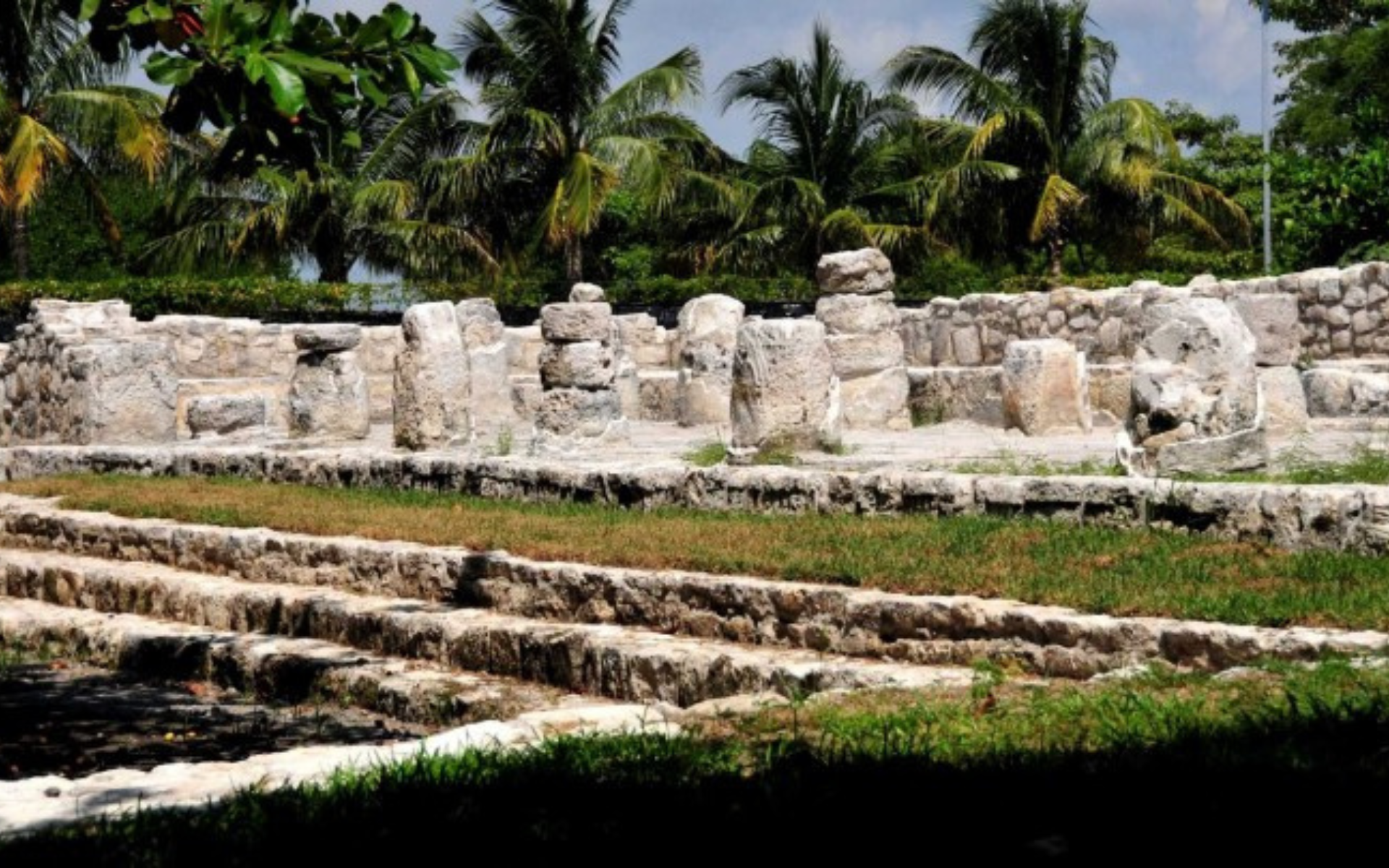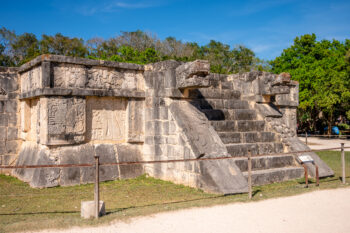
San Miguelito Archeological Site
Discover the archeological site of San Miguelito, one of Quintana Roo's key historical destinations. Find here more information about it.

Discover the archeological site of San Miguelito, one of Quintana Roo‘s key historical destinations.
The archeological site of San Miguelito owes its name to the former copra, or coconut, farm that operated in this area between 1950 and 1970. It is an ancient site spanning eight centuries, where explorers have unearthed the impressive Palace of Chaac, nearly 50 burials, and a wide variety of artifacts, both from the area and from farther-flung sites (made of obsidian, quartz, ceramic, coral, and shells), demonstrating its commercial importance. Find more information about this historical attraction here.
The Significance of the San Miguelito Archeological Site
The primary economic activities in this province included fishing, agriculture, and the production of salt, honey, copal resin, and cotton. These products were traded in a complex network that disintegrated in the mid-16th century with the arrival of the Spaniards on the Yucatán Peninsula. At that time, indigenous population centers were gradually abandoned, leaving the region of the current state of Quintana Roo completely deserted. Archeological explorations have recovered goods from farther away, such as basalt artifacts, flint, and copper rings. Chronology: Late Postclassic, 1200 AD to 1550 AD.
Two stages of San Miguelito’s history have been identified so far:
- The first runs from the 13th to the 14th century when the settlement was established (1200-1350 AD), and the most important buildings were constructed. During these years, San Miguelito likely had ties with Tulum, Xcaret, and Xelhá, as the architecture of the four sites is similar, belonging to the East Coast style.
- The second stage of San Miguelito is estimated to be around the beginning of the Spanish conquest and colonization, marked by a period of crisis and poverty leading to its abandonment in the 16th century.
Researcher Velázquez Morlet stated that the discoveries recorded in San Miguelito reveal, through material evidence, the final moments of the pre-Hispanic era. They also tell a story about the life of the Maya during the Late Postclassic period.
The 14 restored structures are distributed across five architectural complexes. During your visit, try to spot the following structures:
- The Great Pyramid, where the main building of the site is located, standing 26 feet tall and with a base measuring 39 feet, along with an altar.
- The South structure, featuring several residential units.
- A palace-type building and small altars.
- Another group of monuments is the Dragon Complex. It is named after snake heads that were found there in the 1970s, identified by the local population as dragons. In this area, there are six palace-type structures, residential units, and several altars.
- In the Chaac Complex, there is a palace dedicated to the figure representing the Mayan god of the rain, which served administrative purposes, along with an altar. In the North Complex, there are five residential-type structures, inside of which 47 burials were discovered, 30 of which belonged to infants, and the rest to adults.
Hours: Tuesday to Sunday from 9:00 AM to 4:30 PM.
San Miguelito Archeological Site, Boulevard Kukulcan, Zona Hotelera, Cancún, Q.R., México
See map
 Highlights
Highlights
 Highlights
Highlights
 Highlights
Highlights
 Highlights
Highlights
 Highlights
Highlights
 Highlights
Highlights
 Highlights
Highlights
 Highlights
Highlights
 Highlights
Highlights
 Highlights
Highlights
 Highlights
Highlights
 Highlights
Highlights